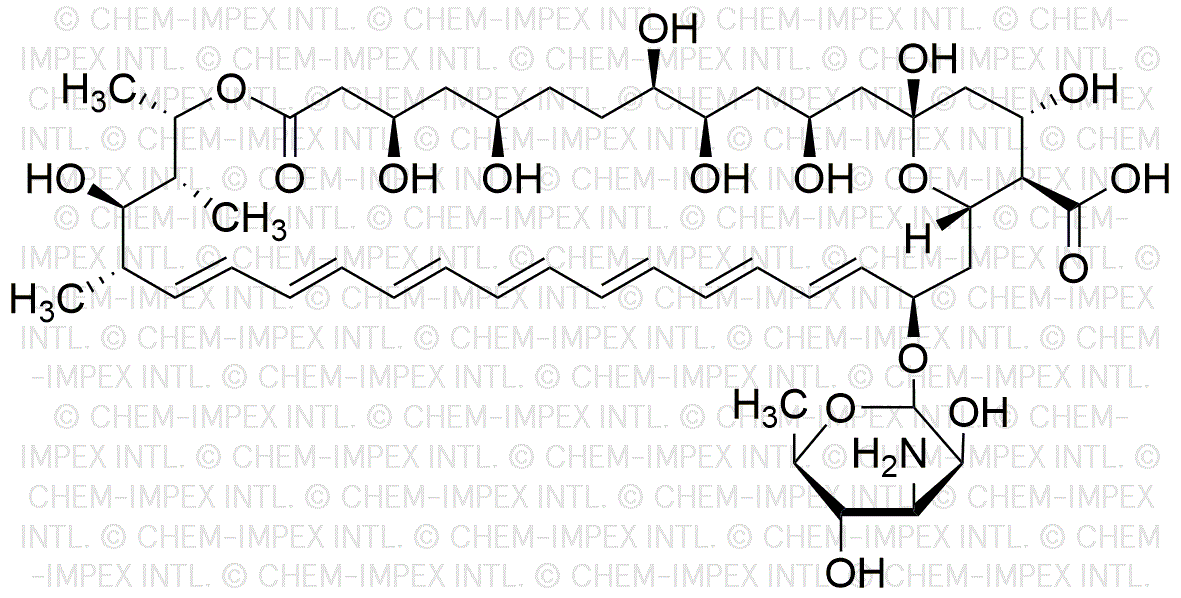Amphotericin B from Streptomyces species is widely utilized in research focused on:
- Antifungal Treatments: This compound is a cornerstone in treating serious fungal infections, particularly in immunocompromised patients, such as those undergoing chemotherapy or with HIV/AIDS.
- Pharmaceutical Development: Researchers are continually exploring formulations that enhance the efficacy and reduce the toxicity of Amphotericin B, leading to innovative drug delivery systems.
- Veterinary Medicine: It is also used in veterinary practices to treat fungal infections in animals, showcasing its versatility across species.
- Research on Drug Resistance: Scientists study Amphotericin B to understand mechanisms of antifungal resistance, which is crucial for developing new therapeutic strategies.
- Combination Therapies: This compound is often used in combination with other antifungal agents to improve treatment outcomes and minimize side effects, making it a valuable tool in clinical settings.
General Information
Properties
Safety and Regulations
Applications
Amphotericin B from Streptomyces species is widely utilized in research focused on:
- Antifungal Treatments: This compound is a cornerstone in treating serious fungal infections, particularly in immunocompromised patients, such as those undergoing chemotherapy or with HIV/AIDS.
- Pharmaceutical Development: Researchers are continually exploring formulations that enhance the efficacy and reduce the toxicity of Amphotericin B, leading to innovative drug delivery systems.
- Veterinary Medicine: It is also used in veterinary practices to treat fungal infections in animals, showcasing its versatility across species.
- Research on Drug Resistance: Scientists study Amphotericin B to understand mechanisms of antifungal resistance, which is crucial for developing new therapeutic strategies.
- Combination Therapies: This compound is often used in combination with other antifungal agents to improve treatment outcomes and minimize side effects, making it a valuable tool in clinical settings.
Documents
Safety Data Sheets (SDS)
The SDS provides comprehensive safety information on handling, storage, and disposal of the product.
Product Specification (PS)
The PS provides a comprehensive breakdown of the product’s properties, including chemical composition, physical state, purity, and storage requirements. It also details acceptable quality ranges and the product's intended applications.
Certificates of Analysis (COA)
Search for Certificates of Analysis (COA) by entering the products Lot Number. Lot and Batch Numbers can be found on a product’s label following the words ‘Lot’ or ‘Batch’.
*Catalog Number
*Lot Number
Certificates Of Origin (COO)
This COO confirms the country where the product was manufactured, and also details the materials and components used in it and whether it is derived from natural, synthetic, or other specific sources. This certificate may be required for customs, trade, and regulatory compliance.
*Catalog Number
*Lot Number
Safety Data Sheets (SDS)
The SDS provides comprehensive safety information on handling, storage, and disposal of the product.
DownloadProduct Specification (PS)
The PS provides a comprehensive breakdown of the product’s properties, including chemical composition, physical state, purity, and storage requirements. It also details acceptable quality ranges and the product's intended applications.
DownloadCertificates of Analysis (COA)
Search for Certificates of Analysis (COA) by entering the products Lot Number. Lot and Batch Numbers can be found on a product’s label following the words ‘Lot’ or ‘Batch’.
*Catalog Number
*Lot Number
Certificates Of Origin (COO)
This COO confirms the country where the product was manufactured, and also details the materials and components used in it and whether it is derived from natural, synthetic, or other specific sources. This certificate may be required for customs, trade, and regulatory compliance.


